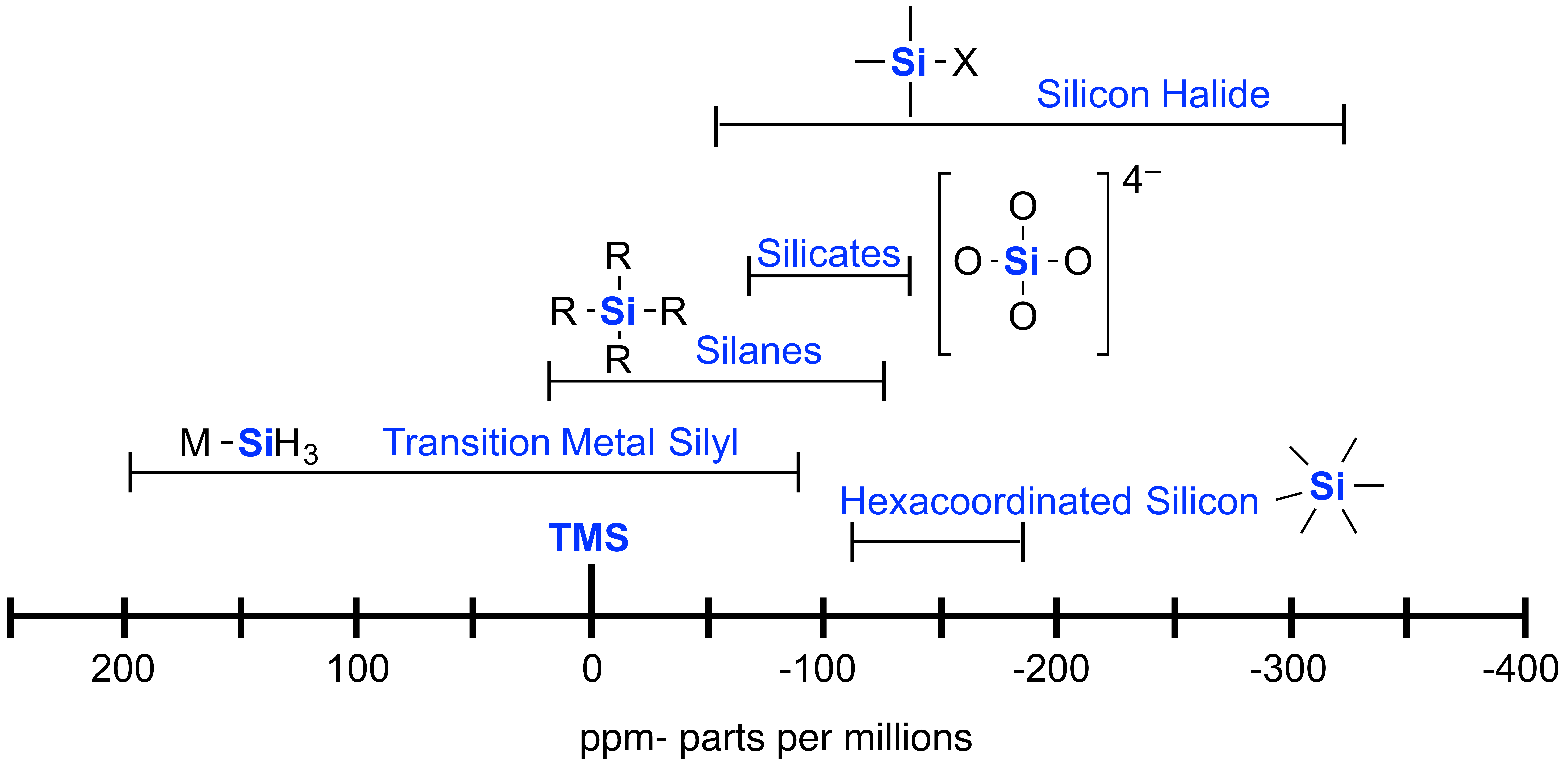
Silicon can be found in many materials ranging from hardware such as glass and electronic components to cosmetics and high-performance fluids. It is also commonly used as protecting groups in organic synthesis. Structural characterization of silicon based materials can be achieved through Si-29 NMR which is often used to characterize siloxane polymers.
Similar to H-1 and C-13, Tetramethylsilane (TMS) is commonly used as an internal standard for Si-29 NMR as a zero point. Common chemical shifts are listed above for variations of the silicon structure. While Si-29 NMR has medium sensitivity in comparison to other nuclei, the relaxation time required is usually longer. Additionally, it has a negative gyromagnetic ratio thus requiring inverse gated decoupling pulse sequences. Unfortunately, since silicon is common in many different materials, components of the NMR probe itself will give off a broad signal in the Si-29 NMR spectra. While silicon based materials come in many forms, we only perform NMR on samples which can be dissolved in a solvent.